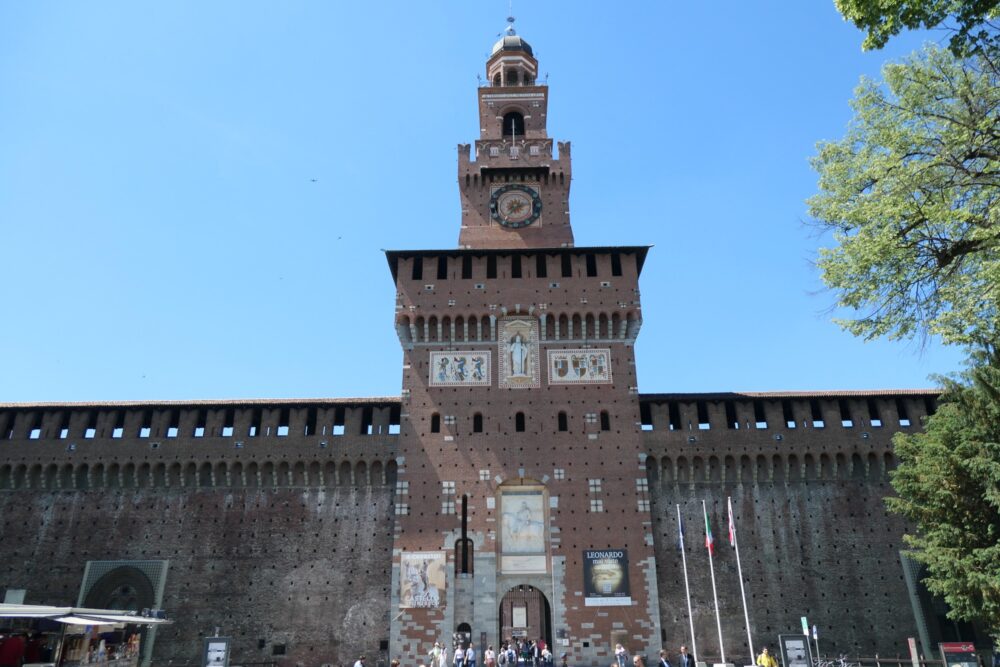Flak Towers of Vienna
When talking about World War II, the Flak Towers often go unmentioned. These 20th century fortifications were designed to withstand a direct hit from an aerial bomb.
Adolf Hitler ordered the construction of the Flak Towers on 9th of September 1942. The idea was to protect Vienna from allied air raids. How well that worked, we’ll cover later, let’s first have a look at some technical details:
Tip of the day: Click on a photo to see details about it.
And don’t forget to connect on Reddit, Pinterest or Twitter.
An Introduction to Flak Towers
The term ‘Flak’ is a German acronym for ‘FLugAbwehrKanone‘ meaning air defense cannon. The Flak towers were meant to intercept enemy bombers and to provide shelter during air raids.
Flak towers were built in pairs: A smaller control tower (German ‘Leitturm’, also referred to as L-Tower) housing the radar and search lights, and a much bigger gun tower (German ‘Gefechtsturm’, or G-Tower) for the anti aircraft guns. Both towers were up to several hundred meters separated from each other.
These towers have between two meters (6.5 ft) and seven meters (23 ft) thick walls. Construction took between seven and 11 months, which is remarkably short if you consider that men were needed at war and hence the towers were built mainly by forced laborers.
The gun towers in Vienna were armed with 12,8 cm (5 in) Flak 40 cannons, that had a defense radius of 20 km (12.4 mi). Their location was chosen to form a protective triangle with Vienna’s St. Stephen’s Cathedral roughly in the center.
How well did the Flak Towers work?
To properly answer that question, we have to differentiate between their defensive and offensive use cases. Let’s first have a look at their defensive use:
Beside intercepting attacking bombers, the Flak Towers were also used as air raid shelter. Each tower could accommodate up to 30.000 civilians. Some flak towers even contained a hospital and manufacturing facilities. They were one of the safest places during an air raid. So in term of protecting civilians, they worked quite well.
How about their offensive efficacy?
To answer that question, let’s have a closer look at some numbers: The British Royal Air Force and the American Air Force flew a total of 53 air raids against Vienna, dropping more than 100.000 bombs and destroying or damaging 21% of the houses in Vienna.
To hit a bomber, Vienna’s air defense fired about 3400 rounds from their 12.8 cm (5 in) caliber flak 40 cannons.
During the day, about one out of 125 bombers got shot down, during the night, about one out of 145 bombers didn’t went home. However, roughly one third of the bombers that returned to their base were heavily damaged. If that’s a good or a bad hit rate, I do not know, but you are privileged to judge for yourself.
Visit the Flak Towers in Vienna:
With the exception of the usual (meaning highly untalented) graffiti, the Flak Towers in Vienna are preserved largely unchanged. There’s only one tower that can be entered though: The L-Tower at Esterházypark, which belongs to Vienna’s Aqua Terra Zoo. All other towers can just be seen from outside. Here are a few details about them:
Flak Towers at Arenbergpark:
Arenbergpark is a small park about 2 km (1.2 mi) to the south east of Stephansplatz – the center of Vienna’s historical old town. The control and gun towers are separated by about a hundred meters from each other.
They’ve been built between December 1942 and October 1943, and are of second generation design (recognizable a the square shaped G-Tower). The gun tower at Arenbergpark is the biggest Flak Tower in Vienna.
Flak Towers at Augarten:
Augarten is another park in Vienna. It’s located about a 2.5 km (1.5 mi) to the north of Vienna’s historical town center. Both towers were built between Juli 1944 and January 1945 and are based on the third design of Flak Towers. They were the last Flak towers built by the Third Reich, and with a height of 55 meters (180 ft), the Gun Tower is the tallest Flak Tower ever built. Both gun and control towers are separated by about 400 meters.
Farewell
Hitler’s original plan was to clad the Flak towers with marble and use them as memorial for the fallen German soldiers after victorious completion of the war. Well, needless to say, that never happened… But the flak towers became memorials non the less.








